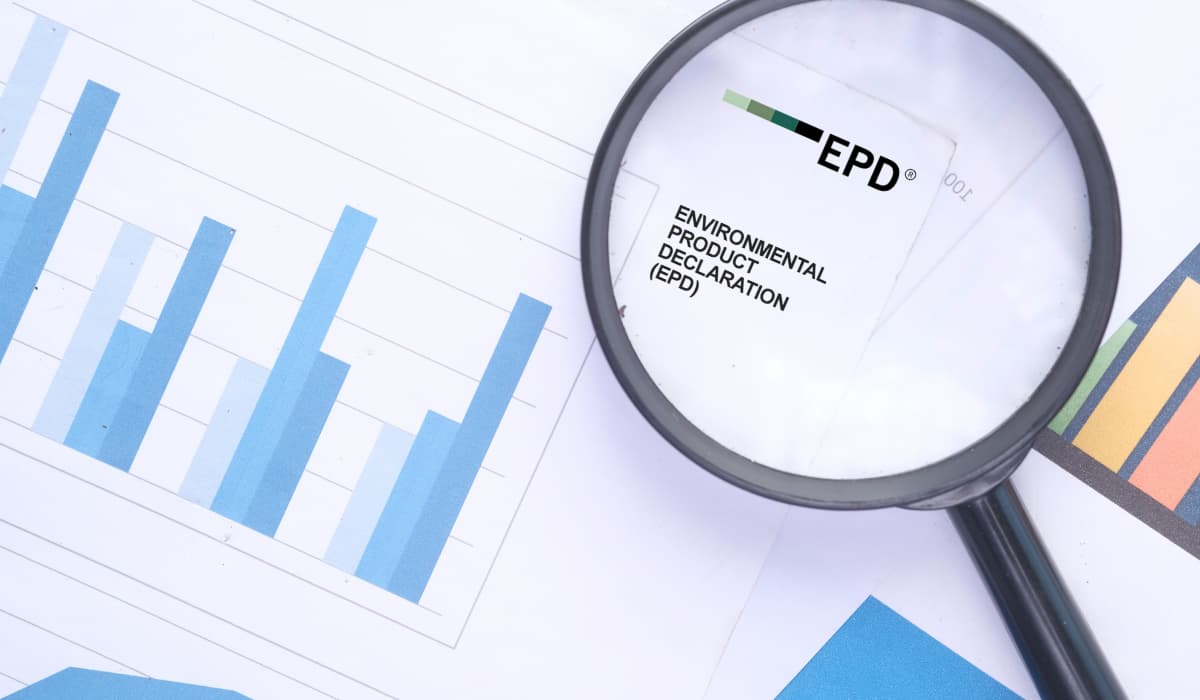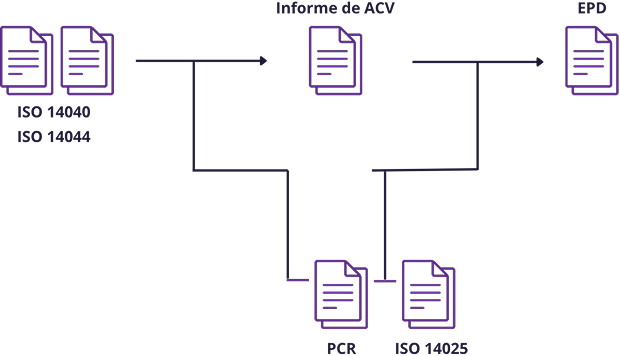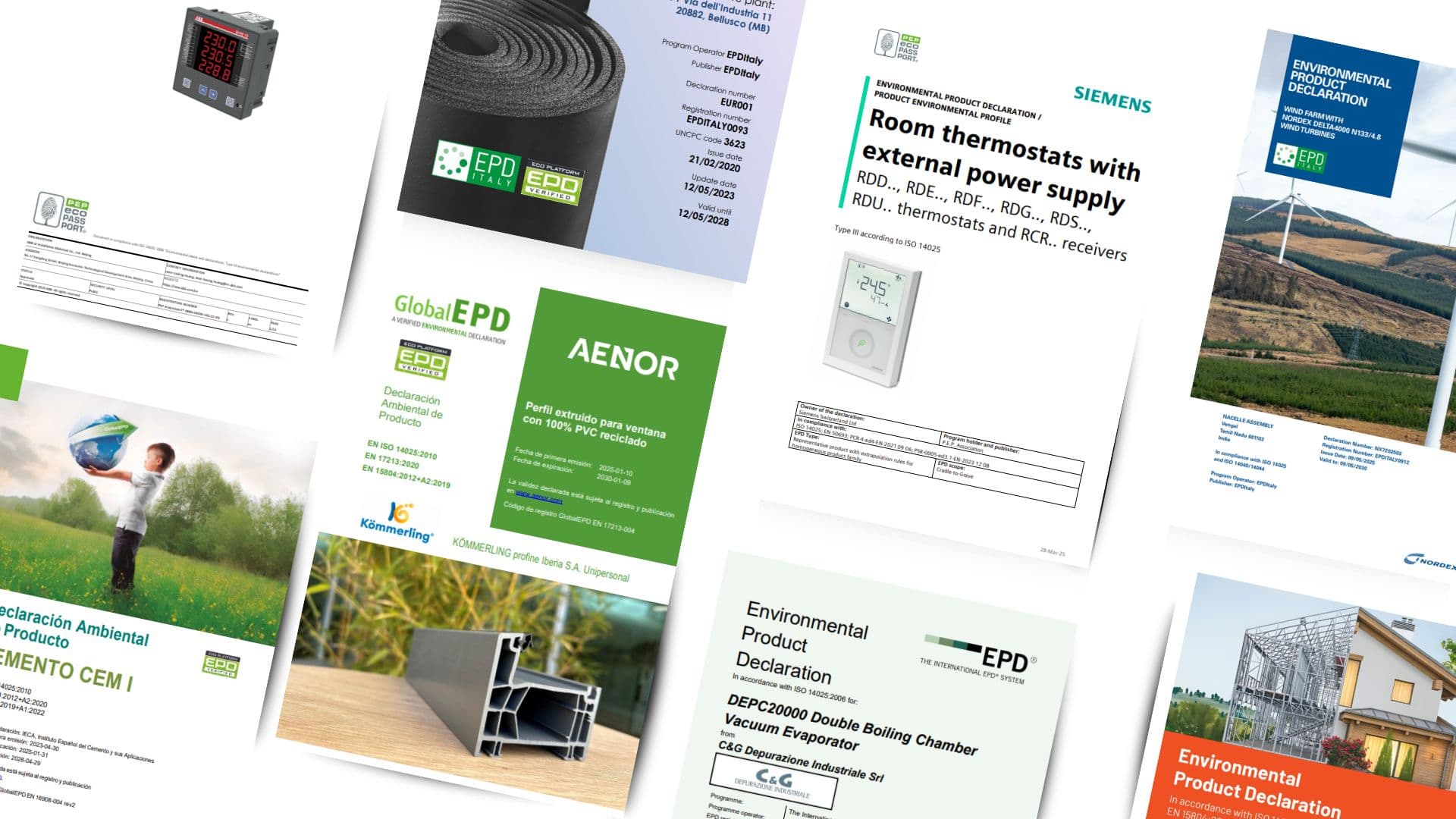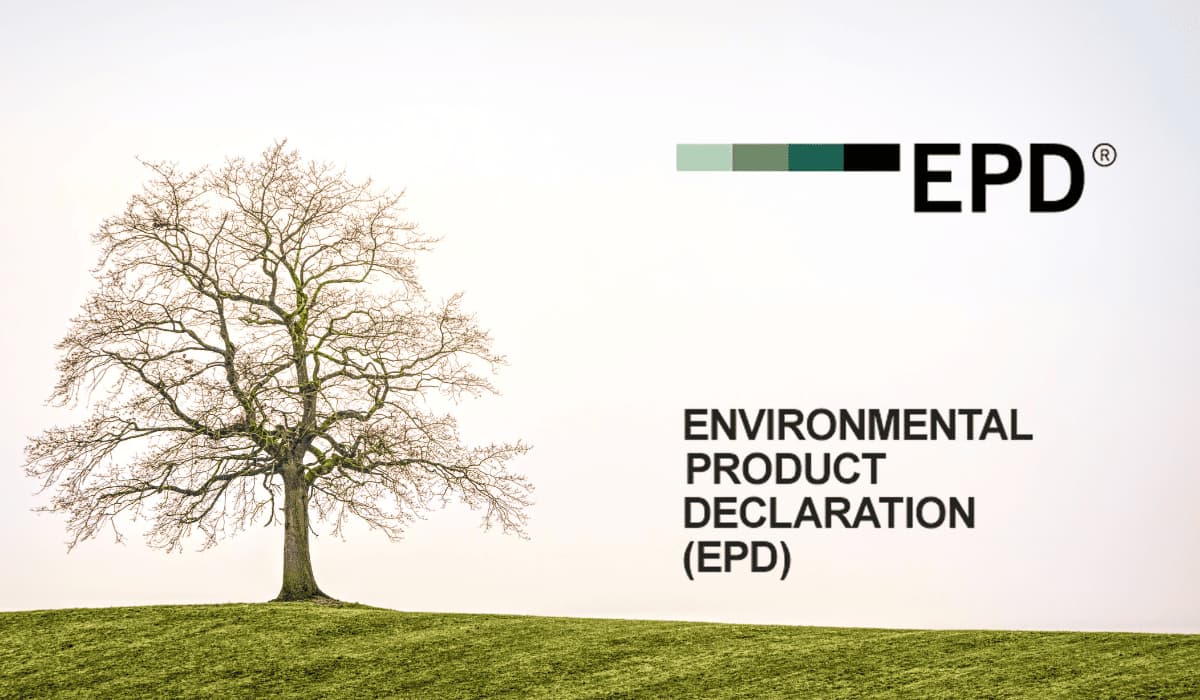In today’s business landscape, where sustainability has become both a regulatory and market-driven requirement, Environmental Product Declarations (EPDs) are emerging as key tools. They enable companies to communicate the environmental impacts of products and services in an objective, transparent, and verifiable way.
Beyond regulatory compliance, EPDs strengthen a company’s competitive position in sectors such as construction, industry, energy, and food, and help facilitate access to public tenders, green financing, and sustainable supply chains.

What is an Environmental Product Declaration?
An EPD is a standardised technical document that communicates, in a quantitative, verifiable, and transparent way, the environmental impacts associated with the life cycle of a product or service. Based on ISO standards, it must be verified by an independent third party, which ensures its reliability and suitability for both official and commercial contexts.
Its main purpose is to provide a rigorous environmental profile, based on data calculated using life cycle assessment (LCA) and structured around clearly defined and consistent environmental indicators, such as:
- Resource consumption (energy, water, raw materials)
- Greenhouse gas (GHG) emissions
- Waste generation
- Potential impacts such as toxicity, acidification, or eutrophication
Although these indicators are standardised and allow for potential comparison, an EPD by itself does not constitute a direct environmental comparison between products. For such a comparison to be valid, the EPDs being analysed must have been developed under the same Product Category Rules (PCR) and using the same methodological approach.
How is an EPD developed?
EPDs are governed by ISO 14025, which defines Type III environmental labelling. This standard requires:
- The application of a life cycle assessment (LCA) in accordance with ISO 14040/14044
- The use of Product Category Rules (PCRs) to ensure consistency and comparability
- Independent third-party verification
- A standardised format for the public communication of results
ISO 14025: regulatory framework for environmental product declarations
Environmental Product Declarations are developed within the framework of the ISO 14020 family of standards, which covers different types of environmental labelling. EPDs, in particular, fall under Type III labelling, as defined by ISO 14025.
This standard establishes that the quantification of environmental impacts must be carried out through a life cycle assessment (LCA) in accordance with ISO 14040 and ISO 14044. It also requires the use of Product Category Rules (PCRs), which specify how to apply LCA to specific product types in order to ensure comparability.
The standard further requires that the results be verified by an independent third party, and provides a standardised framework for transparent communication of a product’s environmental impacts, enabling their use in public claims, product comparisons, and sustainable procurement.

Product Category Rules (PCRs): the technical foundation for comparability
PCRs define how the LCA should be conducted, which indicators must be reported, and under what conditions, for a specific product category. They are therefore an essential component to ensure that EPDs are reliable, comparable, and useful—both for environmental communication and for the LCA calculation itself. Other measurement frameworks also use PCRs as a calculation basis, such as product carbon footprints aligned with ISO 14067.
Where are EPDs registered?
A key aspect of EPDs is that they are verified by independent third parties, which ensures the credibility and reliability of the published information. EPDs must be published through recognised verification programmes that guarantee the traceability, validity, and transparency of the document. Some of the most widely used programmes include:
- The International EPD System (Environdec)
- EPD Italy
- PEP Ecopassport (for electronics and appliances)
- GlobalEPD (AENOR), among others.
These programmes require full compliance with the applicable ISO standards and PCRs, as well as an independent critical review of the LCA study.

Integration into regulations and reference frameworks
EPDs are based on a standardised and verified LCA, which allows them to be directly integrated into various regulatory frameworks focused on product environmental analysis—such as product carbon footprinting, for example. Thanks to their structured and verifiable format, EPDs could also play a key role in the development of the Digital Product Passport, a European Union initiative aimed at improving the traceability, transparency, and circularity of products sold within the single market.
In addition, EPDs are recognised by systems such as LEED and BREEAM, and can be used as a technical basis to apply for Type I ecolabels (ISO 14024), helping to validate environmental criteria required by these programmes. They also serve as a technical support tool for complying with environmental regulations, such as the CSRD or alignment with the EU Taxonomy.
In this way, EPDs are emerging as a versatile tool that connects environmental measurement with a wide range of obligations and market opportunities.
Competitive and communication benefits
EPDs allow companies to communicate the environmental impact of their products in a clear and objective way, reinforcing transparency with consumers, clients, and regulators. They also support market differentiation, by demonstrating a genuine commitment to sustainability through verifiable data.
Additionally, EPDs are recognised in public procurement schemes and environmental certifications, facilitating access to new markets and tenders. Finally, the development process—based on life cycle assessment—helps identify opportunities to improve efficiency and sustainability, delivering both environmental and operational benefits.
Is an EPD mandatory?
EPDs are not mandatory in general, but their use is increasingly required to:
- Access contracts and tenders that prioritise environmental performance
- Demonstrate compliance with ESG criteria and sustainability commitments
- Operate in international markets with specific environmental requirements
- Avoid greenwashing by using verifiable data
Want to turn your environmental data into a real competitive advantage? At Baisma, we help you develop your EPDs and integrate them into your processes, reports, and value propositions. Tell us about your project.
Insights sugeridos

Integrating biodiversity and natural capital into corporate strategy

Global Circularity Protocol v1.0: What it is and how it applies to business

Circular economy indicators: basics, frameworks and how to apply them
